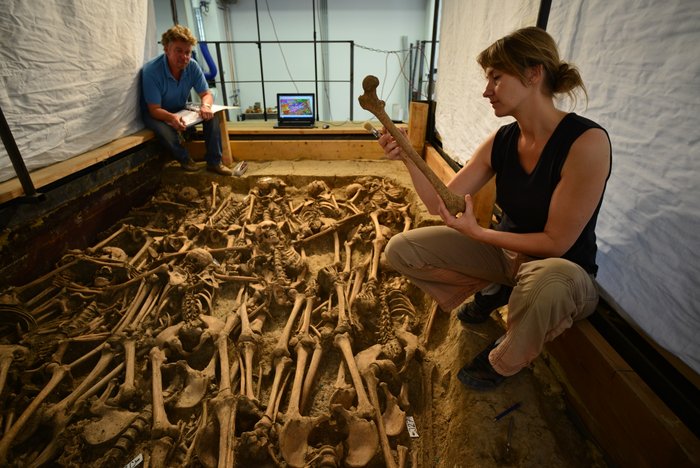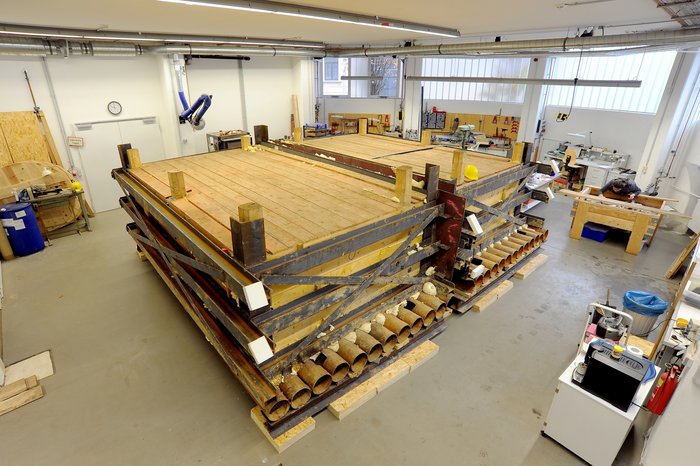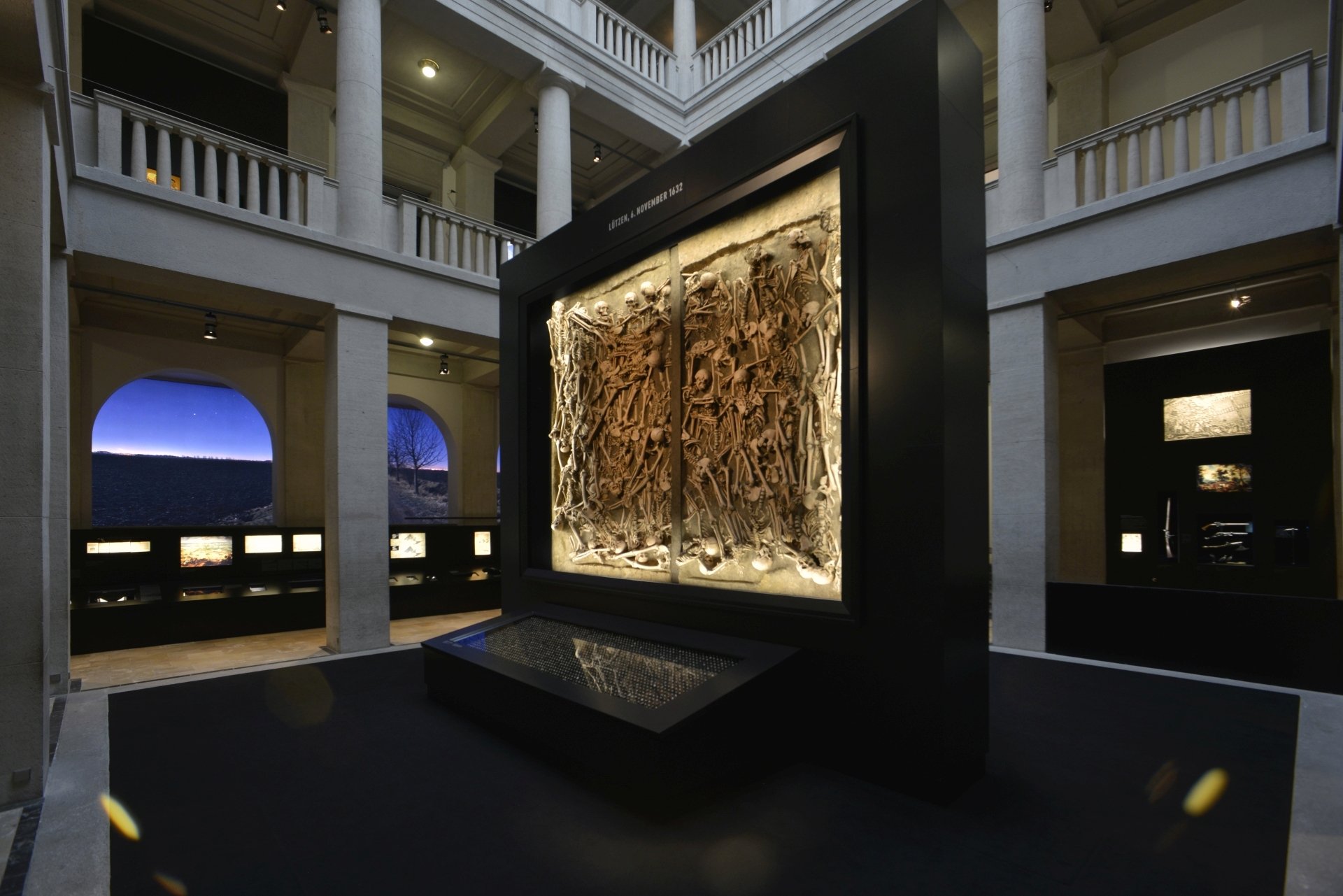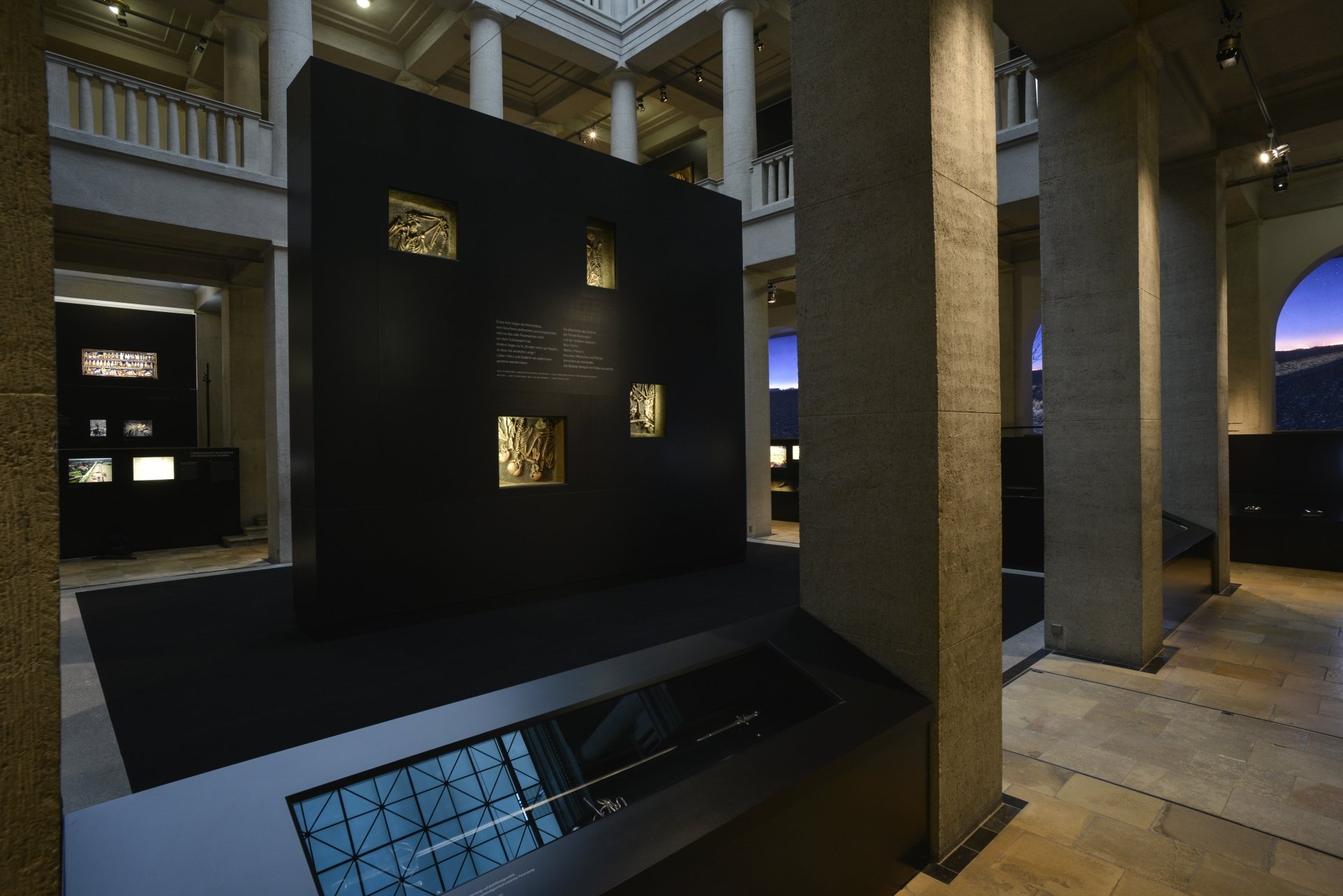The Lützen mass grave
During the Thirty Years' War, two large armies confronted each other at Lützen on 16 November 1632: Gustav II Adolf led his Swedish Protestant army against Wallenstein's Imperial Catholic troops in one of the most costly battles of the war. The event, in the course of which the Swedish king himself lost his life, is attested not only by written sources but also by archaeological finds from the battlefield, which was investigated as part of an international research project. In 2011 archaeologists recovered a particularly eloquent testimony to the battle: a mass grave containing 47 individuals. The finding was block-lifted and transported to the conservation workshop of the State Museum of Prehistory in Halle in November 2011. Here, the block excavation was examined under laboratory conditions by an interdisciplinary team of archaeologists, anthropologists, excavation technicians, and restorers, conserved and prepared for presentation in an exhibition.
The preparation of block excavations has a long tradition at the State Museum. However, the dimensions and weight of the mass grave exceeded all previous experience. The two blocks, each measuring 5 by 4 metres, weighed around 54 tonnes. For the special exhibition 'War – an archaeological search for traces' (State Museum of Prehistory Halle, 6 November 2015 to 22 May 2016), the mass grave was to be presented standing upright. Beforehand, both its upper and lower sides (or in the presentation: front and back) were to be examined in detail archaeologically and anthropologically while retaining the context of the findings.
After completion of the archaeological analyses and documentation, the mass grave had to be turned around. In preparation for the rotation, the exposed front was secured. In addition to a volatile consolidant and a sand packing, a capping made of a glass-fibre polymer plaster laminate was employed. This was covered with a sand-plaster mixture and then the block was closed with planks. After turning, the back side could be examined and exposed, whilst removing as much sediment as possible for static reasons. The subsequent preparation for exhibition began with the application of a water-based sediment-acrylate layer covering the entire back surface. The bones were embedded in a thickened acrylic mass, which was also used to fill in undercuts. Also special areas of findings on the rear side were to be prepared as viewing 'windows'. Here the bones after having been covered with the sediment-acrylate layer were embedded in an epoxy resin layer reinforced with glass fibre. Finally, the back could be stiffened by a glass-fibre polymer plaster laminate, which serves as a stable bed for the findings, and a stable aluminium frame was attached. In the next step, the block was turned back and the former top side prepared as the front or main viewing side. Here, the remaining sediment was consolidated and refilled. The bones were fixed and unevenness of the subsoil was levelled with a sediment-acrylate layer. In this way, the mass grave was successfully prepared for exhibition purposes, but also preserved in its original state.
What stories the dead of the mass grave tell, based on the scientific findings not only of archaeology and their life and suffering in times of war is the focus of the film ›Lützen 1632 - an archaeological search for traces‹. It was made in 2015 as part of the above-mentioned special exhibition at the State Museum. A series of interview films on battlefield archaeology introduces this still rather young discipline within archaeology. Several examples from all over Europe offer a first overview of their questions and methods.



